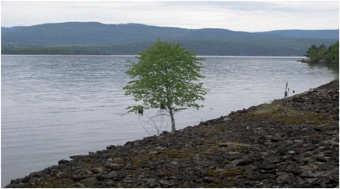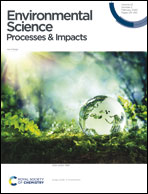Transfer of naturally occurring radionuclides from soil to wild forest flora in an area with enhanced legacy and natural radioactivity in Norway
Abstract
A study of transfer of naturally occurring radioactive materials (NORM), thorium, uranium and their progeny, from soil to wild plant species was performed to evaluate the environmental impact in an area of enhanced natural and legacy radioactivity in Norway. Three sites were chosen for the study: NORM legacy mining, undisturbed 232Th-rich site and reference site. Tissue concentrations, transfer factors and radiation exposure doses were determined in nine wild plant species. High soil activity concentrations of NORM, statistically indistinguishable, were measured at legacy NORM and undisturbed 232Th-rich sites, respectively, while soil from the reference site exhibited a statistically lower activity concentration. Heterogeneous soil radionuclide distributions were observed. The mobile soil fraction of investigated radionuclides was significantly lower, but properly reflected in measured plant uptake. Plant tissue activity concentrations of NORM were significantly higher at both investigated 232Th-rich sites in comparison to the reference site and varied per plant species and analyzed radionuclide, for instance, from non-detectable 232Th in tree needles and leaves to significantly elevated values of measured 210Po in lichens. As expected, plant roots served as a natural translocation barrier, as the concentration of radionuclides in the analyzed samples was up to 88-fold higher than that in the corresponding aboveground plants. Transfer factors for 232Th, 238U, 226,228Ra and 210Po in the aboveground plants ranged broadly from 4 × 10−5 to 1 × 10−2; 1 × 10−4 to 4 × 10−2, 1.07 × 10−3 to 1.08; 2.18 × 10−2 to 9.53 × 10−2 and 9.18 × 10−2 to 9.69, respectively. Radiological exposure dose rates, calculated using the ERICA tool and site-specific data, were from 1 to 23 μGy h−1. Due to elevated NORM levels in analyzed plants, measured radiation exposure dose rates were higher than those of worldwide background biota. Still, the uptake of NORM, demonstrated in the current study, is not expected to cause significant changes at population levels in wild plant species.

- This article is part of the themed collection: Environmental exposure and impacts


 Please wait while we load your content...
Please wait while we load your content...